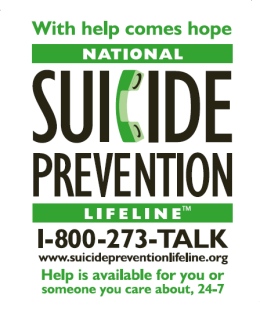Whether it’s a long winter, the economy or just plain inexplicable, there have been two bizarre apparent suicide attempts in the past week — one resulted in a death. It’s times like these that you just have to bow your head and feel for someone who ends up committing extreme violence on his or her own body. And you have to feel for the family or friends who discover such acts of violence. And finally, but not in the least, you have to feel for the police and firefighter/paramedics who endure careers with multiple sightings of violence. For the emergency workers, you just hope it doesn’t occur too often in a short time period. It’s time to stop reading if you don’t want the details.
Both suicide attempts involved males. At least one of the males was in his 80’s. He allegedly attempted to shoot himself in the neck or throat area with a crossbow last Thursday morning. He survived after being rushed by Arlington Heights Fire Department firefighter/paramedics with a police escort to Level I Trauma Center Advocate Lutheran General Hospital.
The second victim allegedly killed himself using a powered Skil saw in the basement of a home, and was discovered Wednesday morning. Arlington Heights police are investigating both cases.


- Family history of suicide
- Family history of child maltreatment
- Previous suicide attempt(s)
- History of mental disorders, particularly clinical depression
- History of alcohol and substance abuse
- Feelings of hopelessness
- Impulsive or aggressive tendencies
- Cultural and religious beliefs (e.g., belief that suicide is noble resolution of a personal dilemma)
- Local epidemics of suicide
- Isolation, a feeling of being cut off from other people
- Barriers to accessing mental health treatment
- Loss (relational, social, work, or financial)
- Physical illness
- Easy access to lethal methods
- Unwillingness to seek help because of the stigma attached to mental health and substance abuse disorders or to suicidal thoughts
SUICIDE TRENDS
In a U.S. study in 2006, suicide was one of the top twenty leading causes of death among persons ages 10 years and older. Suicide ranked 11th, accounting for 33,289 deaths.
Males
From 1991 to 2006, suicide rates were consistently higher among males 65 years and older compared to the younger age groups. However, the suicide rates in males 65 and older declined considerably from 40.12 suicides per 100,000 in 1991 to 28.51 suicides per 100,000 in 2006.
Similarly, suicide rates declined among males 10 to 24 years from 15.43 suicides per 100,000 in 1991 to 11.39 suicides per 100,000 in 2006.
Suicide rates in males 25-64 years also declined from 24.08 suicides per 100,000 in 1991 to 21.27 suicides per 100,000 in 2000, but increased to 23.07 suicides per 100,000 in 2006.
Females
From 1991 to 2006, suicide rates were consistently higher among females ages 25 to 64 years as compared to the other age groups. Suicide rates in females 25 to 64 years increased from 5.75 suicides per 100,000 in 2000 to 6.80 suicides per 100,000 in 2006. Though an increase was also seen among males age 25-64 years over time, the percent increase in this age group is greater for females than for males: a 19% increase between 2000 and 2006 is observed among females 25-64 years and an 8% increase between 2000 and 2006 is observed among males 25-64 years.
Suicide rates in females 65 years and older decreased from 5.94 deaths per 100,000 in 1991 to 3.87 per 100,000 in 2006.
Suicide rates generally declined among females 10 to 24 years, except for an increase from 2.18 suicides per 100,000 in 2003 to 2.68 suicides per 100,000 in 2004.
According to a study from 2002-2006, most suicides among males were by firearm, then suffocation, then poisoning and falls.
According to the study from 2002-2006, most suicides among women are by poisoning, then firearms, then suffocation and falls.
The ‘other’ category for mechanism of suicide was about the same in both sexes.
SOURCE: Centers for Disease Control and Prevention. Web-based Injury Statistics Query and Reporting System (WISQARS). Fatal Injury Reports. Atlanta, GA: National Center for Injury Prevention and Control. Last accessed 2009 August 10.
See also …
Centers for Disease Control and Prevention: Suicide Prevention

All I want to say is that I knew the man that killed himself with the circular saw….I know his family. I am so sad that he felt he had no other way out…and in such a violent way. People that knew him would NEVER believe this, he was a kind, gentle, seemingly happy person. I am praying for his family, that is all I can do…but I urge everyone that has a mate, child, friend, whomever, to let them know that you love them dearly, and to always be real and say what they are feeling. No one should EVER feel this is the only way out, and if someone does, PLEASE GET HELP!!